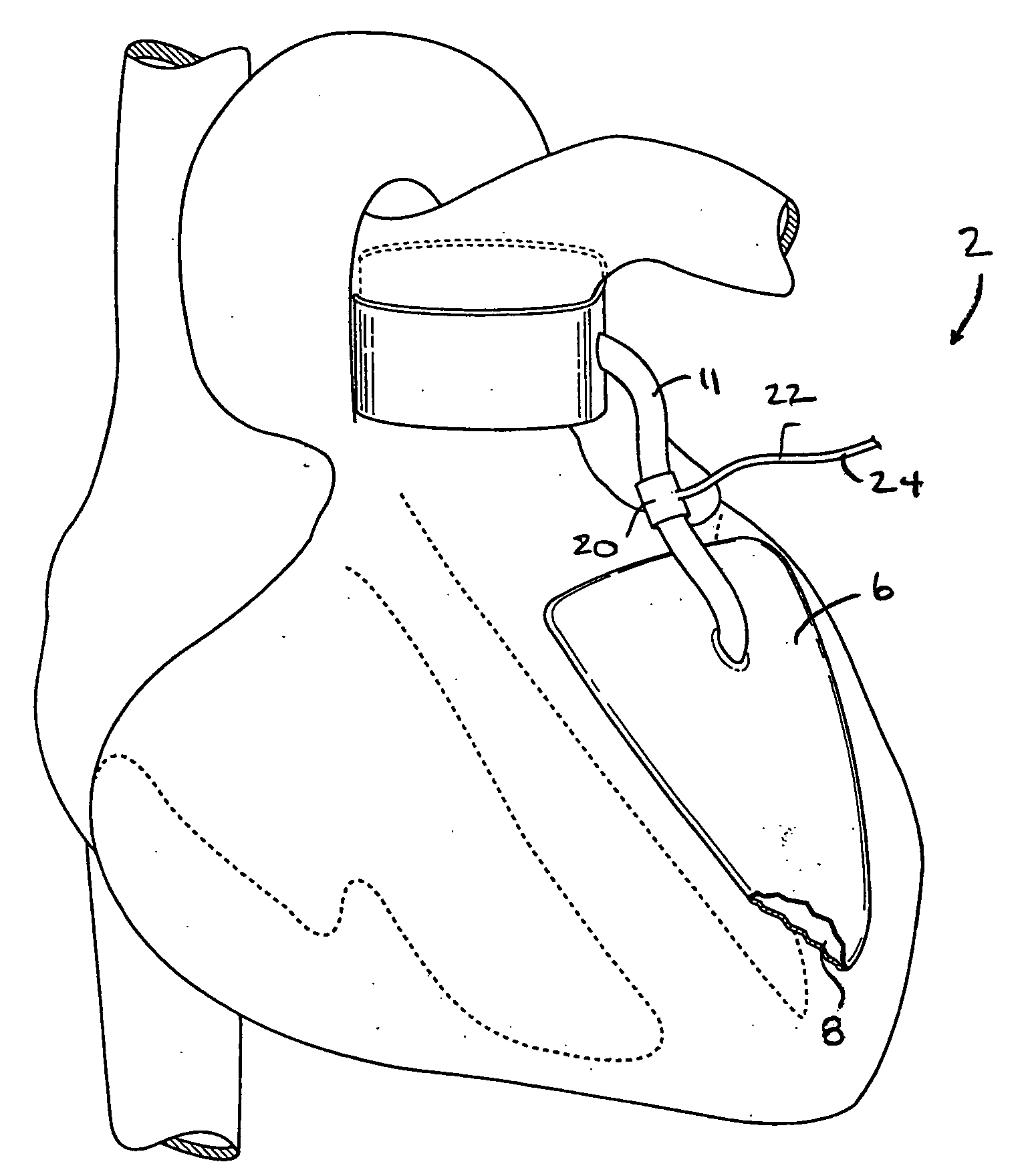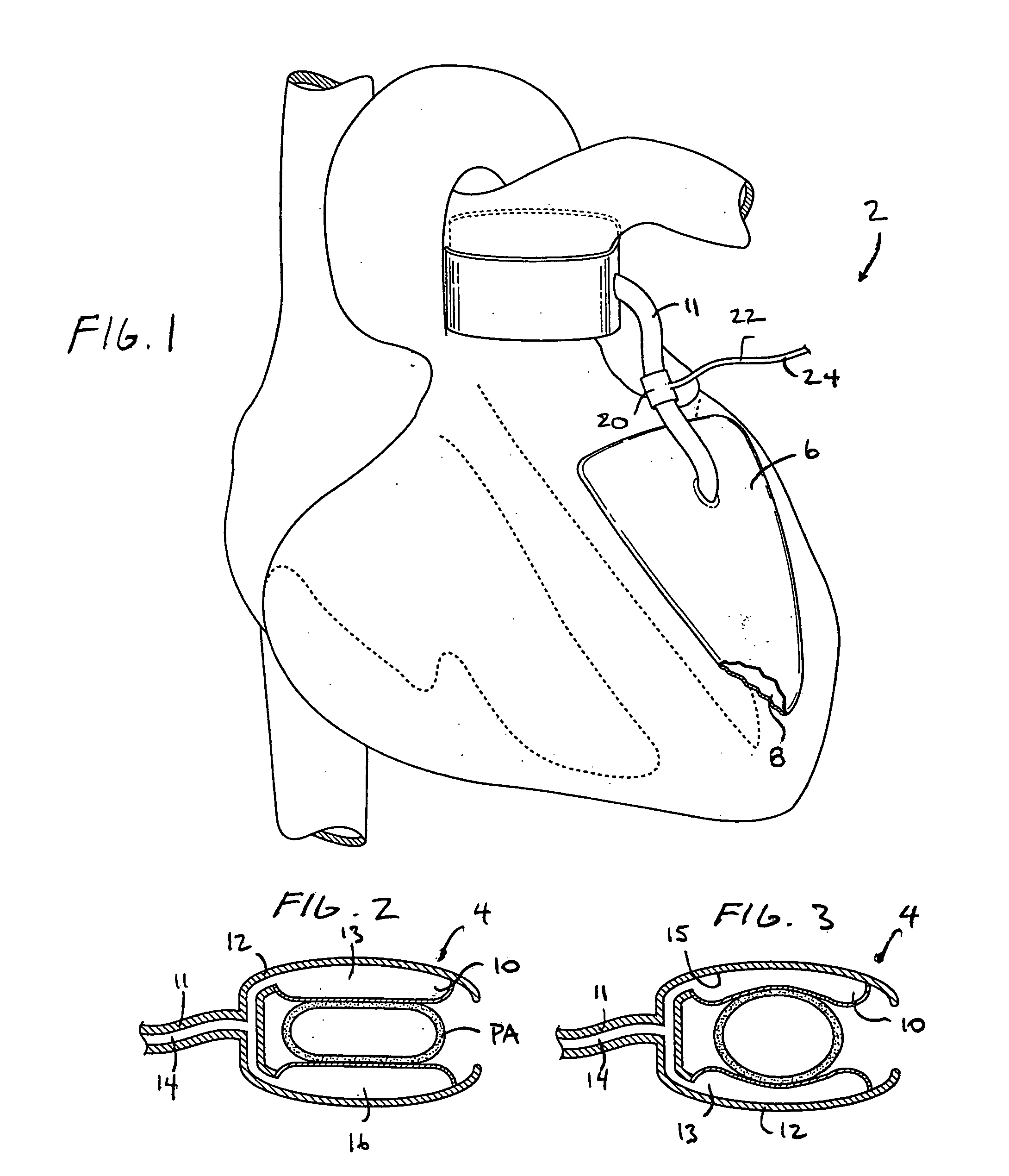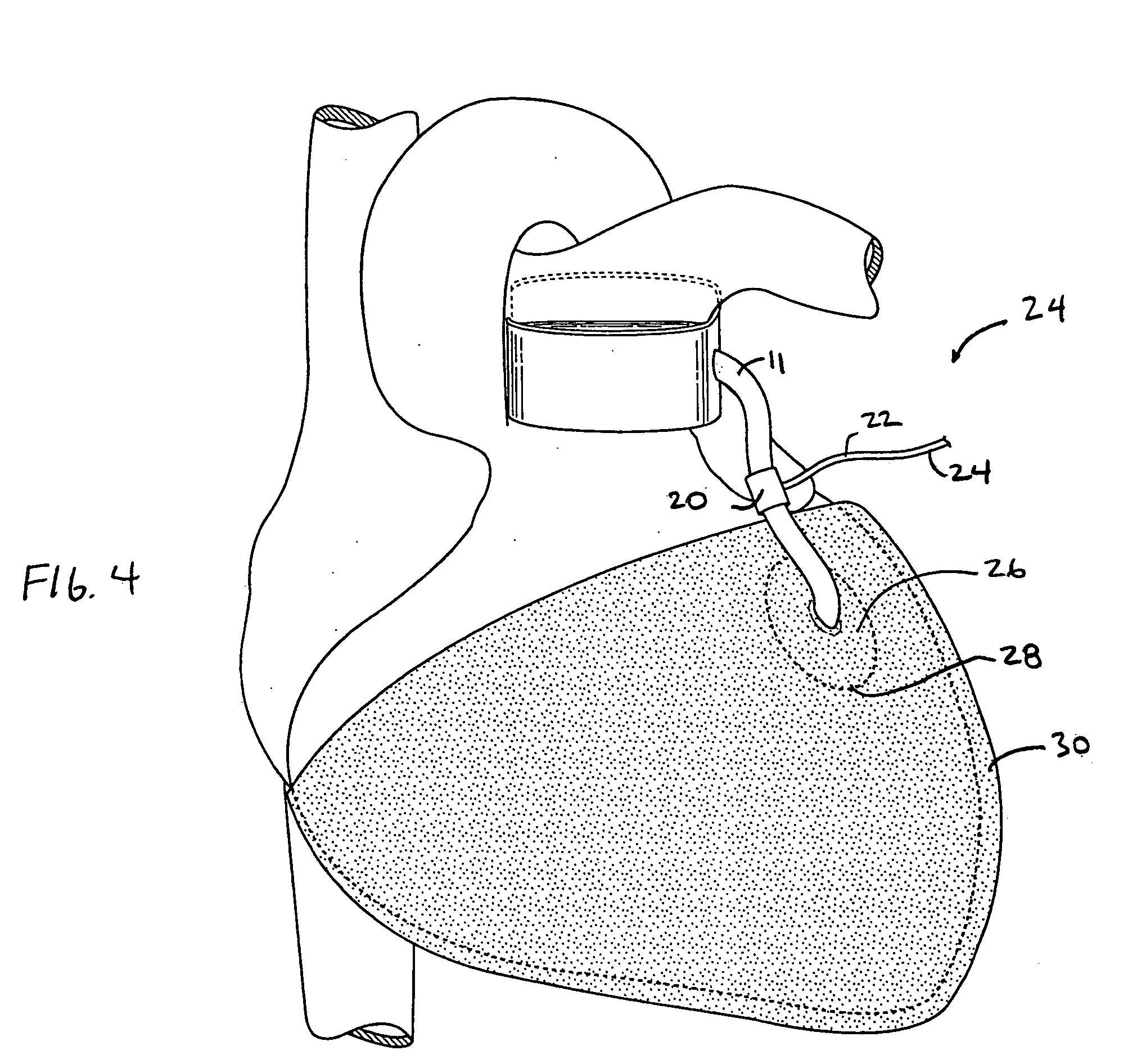Devices and methods for absorbing, transferring, and delivering heart energy
- Summary
- Abstract
- Description
- Claims
- Application Information
AI Technical Summary
Benefits of technology
Problems solved by technology
Method used
Image
Examples
Embodiment Construction
[0024]Referring to FIGS. 1-3, a device 2 for assisting the heart in pumping blood is shown. The device 2 has an energy absorbing element 4 which absorbs pumping energy of the heart. The device 2 also has an energy delivery element 6 which receives energy from the energy absorbing element 4 and uses the energy to provide pumping assistance to the heart. The energy delivery element 6 may include an expandable element 8 placed adjacent to an exterior surface of the left ventricle. The expandable element 8 applies pressure to the exterior surface of the left ventricle during contraction of the left ventricle to assist the left ventricle in pumping blood.
[0025]The energy absorbing element 4 is configured and positioned to absorb pumping energy from the heart when the right ventricle is contracting. The energy absorbing element 4 may be positioned around at least a portion of a blood vessel that is part of the pulmonary arterial tree such as one of the pulmonary arteries. The energy absor...
PUM
 Login to View More
Login to View More Abstract
Description
Claims
Application Information
 Login to View More
Login to View More - R&D
- Intellectual Property
- Life Sciences
- Materials
- Tech Scout
- Unparalleled Data Quality
- Higher Quality Content
- 60% Fewer Hallucinations
Browse by: Latest US Patents, China's latest patents, Technical Efficacy Thesaurus, Application Domain, Technology Topic, Popular Technical Reports.
© 2025 PatSnap. All rights reserved.Legal|Privacy policy|Modern Slavery Act Transparency Statement|Sitemap|About US| Contact US: help@patsnap.com



